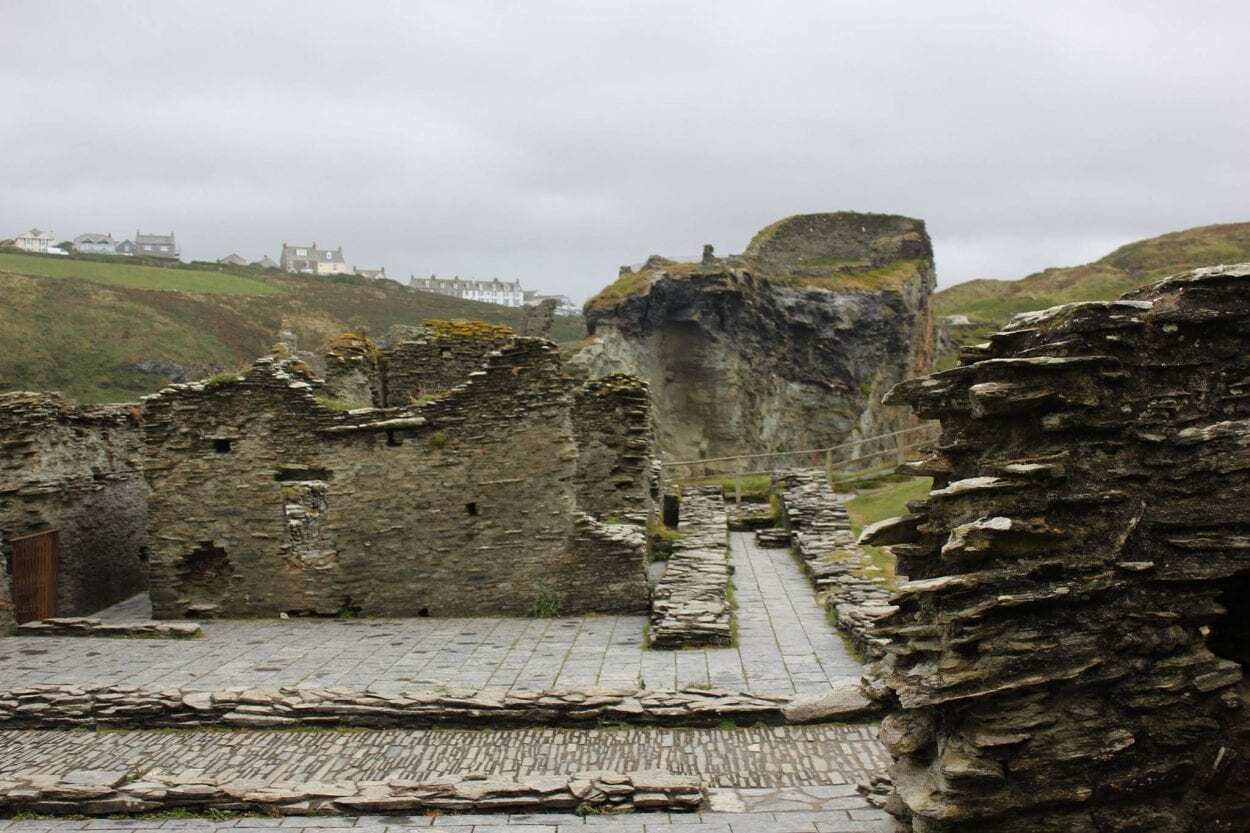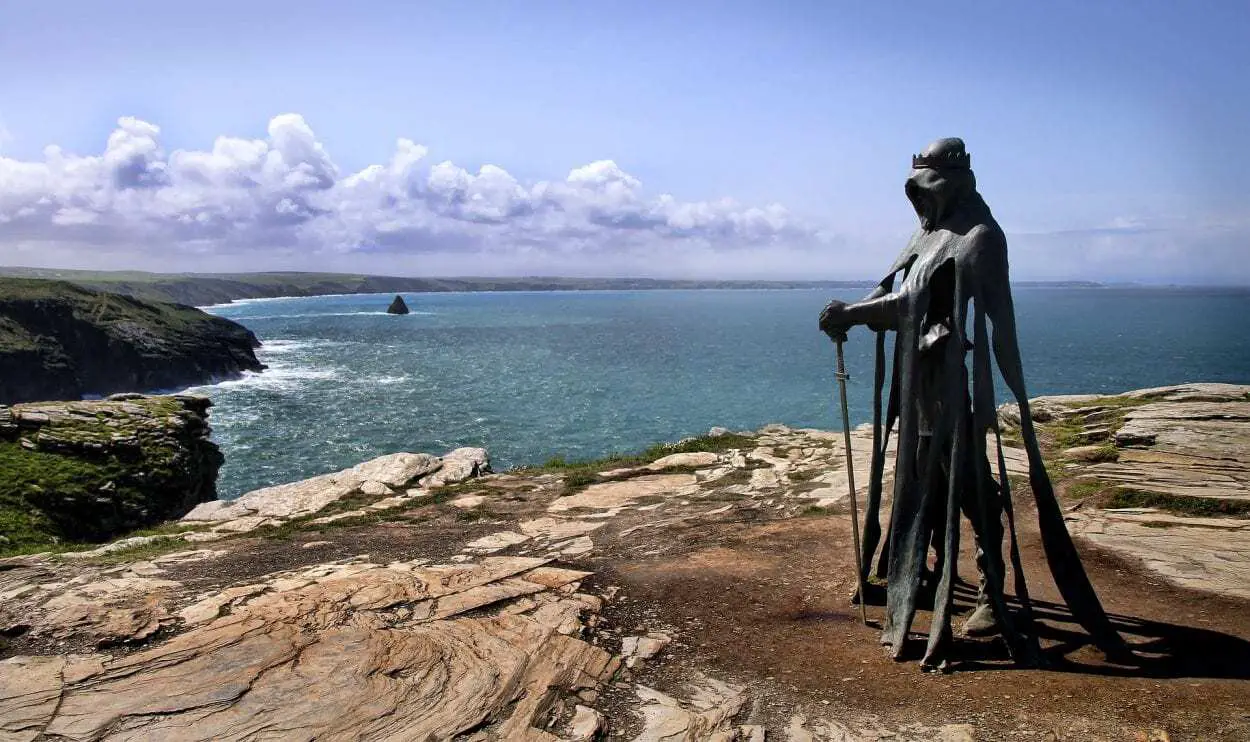Tintagel Castle is an archaeological site and medieval fortification located on a headland next to the modern-day village of Tintagel in Cornwall, England.
The earliest traces of settlement dates from the Roman period, where a proposed Roman outpost has been suggested to occupy the site. Archaeological evidence is scarce, with only small traces of Roman activity such as coins, pottery, and small finds with no identification of contemporary Roman structures.
With the collapse of Roman government in Britannia during the 5th century AD, the former province split into various Kingdoms and Cornwall (formerly civitas Dumnoniorum during Roman times) likely emerged as the Kingdom of Dumnonia, named after the Dumnonii which inhabited the region.

Tintagel developed into a prosperous stronghold and centre of trade, which archaeologists propose was an elite settlement inhabited by a powerful local warlord or even Dumnonian royalty. Excavations have revealed that the headland was covered with small rectangular buildings and was defended on the landward side by large earthworks and a ditch.
Archaeologists also discovered high-status items imported from Africa and the Mediterranean, suggesting that Tintagel was connected to a wide interconnected trade network despite the period being considered the Dark Ages.
In 1138, Geoffrey of Monmouth’s History of the Kings of Britain gave rise to the mythical figure of King Arthur, which Geoffrey associates Tintagel as the site where Uther Pendragon, King of Britain seduced Queen Igerna (wife of Duke Gorlois of Cornwall).

Geoffrey claims that the Wizard Merlin magically changes Uther’s appearance to that of Gorlois to help him enter Tintagel Castle. Disguised thus, Uther goes to Igraine, and “in that night was the most famous of men, Arthur (King Arthur), conceived.”
In 1233, Richard, 1st Earl of Cornwall (the brother of Henry III) traded with Gervase de Tyntagel, swapping the land of Merthen (originally part of the manor of Winnianton) for the ‘Island of Tyntagel’. Richard built a new castle with a great hall to establish a connection with the Arthurian legends and exploit Tintagel’s tradition as a seat for Cornish kings.
By 1337, the castle was already in decline and was reworked into several smaller buildings that were used as a prison by the end of the 14th century.

England was threatened with invasion from Spain in the 1580s and a survey suggested that the castle should be prepared for the possibility of invasion, but no records survive to suggest an official use by the crown or a garrison.
Tintagel succumbed to erosion and neglect, and by the 1600s the castle and headland were deserted and the castle turned to ruin.
Header Image Credit : Public Domain





